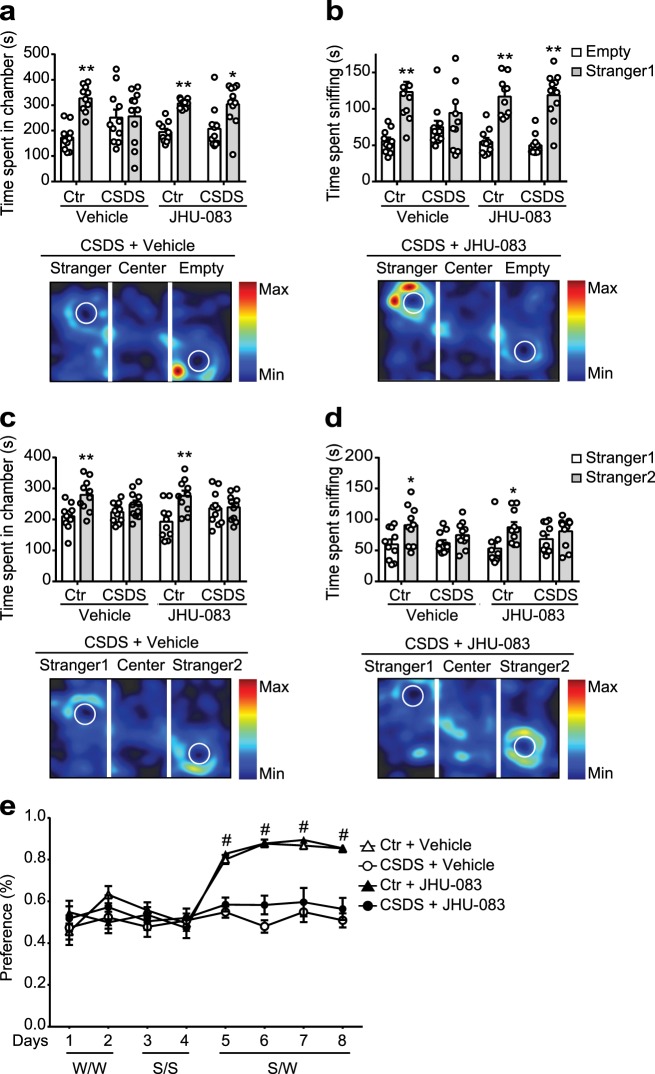Fig. 4.
Acute JHU-083 treatment ameliorates deficits in social behavior, but not anhedonia-associated behavior induced by CSDS. a, b Acute treatment of JHU-083 (1.82 mg/kg, p.o.) one day after CSDS alleviates social avoidance induced by CSDS, but has no effect on sociability in control mice (Ctr). **p < 0.01, determined by Student’s t-test. c, d CSDS leads to reduced preference for social novelty assessed by measurement of time spent in each chamber and time spent sniffing stranger 1 and stranger 2 mouse in the three-chambered social interaction test. Acute treatment of JHU-083 (1.82 mg/kg, p.o.) has no effect on altered preference for social novelty induced by CSDS nor on social novelty recognition in control mice. *p < 0.05, **p < 0.01, determined by Student’s t-test. a–d Representative heat map images (lower panels) represent movements of the CSDS mice treated with vehicle or JHU-083. e CSDS induced anhedonia-associated behavior reflected by decreased sucrose consumption when given a choice between 1.5% sucrose and water. JHU-083 did not rescue CSDS-induced sucrose preference deficit nor have effect on sucrose preference in control mice. CSDS + Vehicle vs. CSDS + JHU-083: **p < 0.01, by three-way repeated measures ANOVA followed by Bonferroni’s post-hoc comparisons. a–e Data are presented as the mean ± SEM. Ctr + vehicle, n = 10; Ctr + JHU-083, n = 10; CSDS + vehicle, n = 11; CSDS + JHU-083, n = 11

